If you have ever watched ‘Alvin and the Chipmunks’ or ‘Chip n Dale’, you know how cute and cuddly a chipmunk can be, especially for the kids. However, if chipmunks decide to move into your home, that cute and cuddly feeling is quickly replaced by frustration.
Chipmunks are rodents and can be categorized as pests; they can cause untold damage to your yard as well as your garden.
Today we will be looking at some of the best chipmunk poison options for when you can’t get rid of chipmunks with more conservative methods.
Eliminating Chipmunks With Poison
If all humane options have failed, you can poison the chipmunks to get rid of the infestation.
Remember, using any type of poison can lead to killing innocent wildlife, and can potentially harm your family or pets.
This includes exposure to the poisoned rodent, not just the poison itself.
Also, keep in mind that some states are heavily regulated when it comes to the use of pesticides and insecticides. Always check your local laws before embarking on a killing spree.
Does Rat Poison Kill Chipmunks?
In many cases, yes. When used correctly, various types of rat poison and other rodenticides do indeed kill chipmunks.
Best Chipmunk Poisons on the Market
#1 – Farnam Just One Bite II Bar
Farnam makes a wide range of pest repellents, traps, and poisons including the Just One Bite II. This product can be broken up, making it easier to place the poison hard to reach places such as chipmunk burrows.
- Kills roof rats, house mice, meadow voles, and warfarin-resistant Norway rats
- Norway rats and house mice may consume a lethal dose in a single night’s...
- Features nibble ridges to promote rat and house mouse chewing
The bars also feature a nibble ridge making it easier for the chipmunk to chew on the chipmunk poison bait. Thanks to the individual wrapping, the bait will remain fresh for long-term storage.
You can purchase the Just One Bite II bars in 8 pound boxes, with each bar weighing in at one pound. After consuming the bait, the first dead chipmunks should start to appear within four to five days.
Pros:
- The bait bar can be easily hidden from sight.
- A hard and chewy composition suitable for chipmunks teeth.
- Can be broken up and easily placed without needing a bait trap.
Cons:
- As it is a poison, it may lead to secondary kills.
#2 – Tomcat All-Weather Bait Chunx
Tomcat has been a top name in pest control for many years.
- For use in and around agricultural buildings and homes
- Norway rats, roof rats and house mice cease feeding after consuming a toxic dose
- Kills up to 12 mice per 1 oz. block
These All-Weather Bait Chunx are manufactured with food-grade ingredients and other enhancements. This makes the bait palatable while producing consistent results in controlling pest infestations.
Furthermore, their baits are an economical choice for the day to day control and prevention of chipmunk problems. You can purchase the All-Weather Bait Chunx in extruded block form, chipmunk poison pellets, place packs, or in a liquid concentrate to match your individual needs.
Pros:
- It can be easily scattered around the garden or other infested areas.
- The human-grade food ingredients hels in luring the chipmunk.
Cons:
- Pets will also be attracted to the quality ingredients.
#3 – Just One Bite II Pellet Packs
A variation on the aforementioned Just One Bite II bar, these pellet packs provide a fast and effective indoor and outdoor chipmunk control.
- Just One Bite II kills mice, roof rats and Norway rats
- Norway rats and house mice may consume a lethal does in one feeding
- BULK SIZE 8LB BOX
Each pellet contains the active ingredient bromethalin, which is extremely toxic for chipmunks. The pellet packs do not need to be opened as the packaging is easily chewed through by the chipmunks
After a lethal dose, it may take two or more days for the poison to kill the chipmunks. These pellets are sold in a 4-pound pail containing 88 place packs, more than enough to cover a substantial area around the home and garden.
Pros:
- The no-touch packaging is easy to chew for chipmunks.
- The pellet packs are designed to target other pests.
- Convenient packs are easy to distribute.
Cons:
- The poison can kill other animals.
#4 – Victor Mole & Gopher Poison Peanuts
Well-known Sweeney’s poison peanuts fall under the Victor brand of products and have been a trusted brand on the market since 1898.
- Kills Moles & Gophers - Poison Peanut Pellets quickly kill moles and gophers...
- High-Quality Bait Formula - The peanuts are designed to look and taste extremely...
- Easy to Apply - The cleverly designed container features a cone tip that allows...
The poison peanuts attract chipmunks and squirrels, and are fast-acting.
These poison peanuts come in a handy 6-ounce container. The canister’s design features a cone-shaped tip that allows the user to puncture holes in any visible surface tunnels for hands-free application of the peanuts.
You may have heard the myth that Juicy Fruit gum kills gophers and chipmunks but it’s not worth trying. Just get some Victor poison peanuts for a much higher success rate.
Pros:
- Comes in a handy cone-shaped container for punching holes in chipmunk tunnels.
- Designed to target other pest infestations as well.
Cons:
- This product may be restricted or illegal in some states.
What is a Chipmunk?
A chipmunk is a small rodent of the Sciuridae family. They’re known in scientific circles as a type of ground squirrel from the (debated) genus Tamias.
Scientists are currently debating on whether the 25 different kinds of chipmunks should be considered three subspecies or upgraded to three separate races, with 23 of them belonging to the proposed genus Neotamias and the other two being the only living species in their own genera.
Regardless of where you stand in the debate, chipmunks are commonly identifiable by their brown to reddish-brown fur, with black and white stripes along the back.
They also have much much shorter tails than regular squirrel species.
Where Do They Live?
When it comes to the choice of homes, the chipmunks are quite versatile.
They can be found in the woods, burrowed in lawns or gardens, shrubbery, or trees.
They also take advantage of natural shelters such as piles of logs or stones.
Chipmunk burrows can be quite extensive, with several carefully camouflaged entrances. Inside is an extensive network of tunnels, complete with living spaces and food storage compartments.
Chipmunks Think They’re Rabbits
When the breeding cycle comes around, a female chipmunk’s pregnancy lasts about one month, and she can give birth to an average litter size of between two and eight babies.
As with most rodents, the female chipmunk will breed multiple times per year.
Therefore, it’s best if you moved quickly against the chipmunks before they can multiply.
Do Chipmunks Hibernate?
Of the 24 species living in North America, only the Eastern Chipmunk (Tamias striatus) hibernates.
Meanwhile, western chipmunks store up their food either in a single larder or in multiple caches.
They remain hidden safely in their burrows, surviving off of their food stores until spring arrives.
Problems Caused By a Chipmunk Infestation
They Eat Everything
Chipmunks LOVE to eat and hoard non-perishables such as sunflower seeds. They’ll consume just about anything on offer in the home or garden.
They particularly enjoy various fruits, roots, herbs, bulbs, and mushrooms. While foraging, a chipmunk can wreak havoc on the vegetable garden and flower patches.
They Like to Dig
Chipmunks will readily dig holes into the lawn and flower beds for food or shelter. Chipmunk holes can quickly ruin a nicely manicured lawn.
They can also dig into the foundations, walls, and stairs. It’s not uncommon for this to cause extensive damage to properties.
Population and Disease Risks
As mentioned, chipmunks breed quickly. This can not only result in a population explosion, but a higher risk of disease exposure.
Exposure can come from chipmunk poop or (if you corner one) their bite.
There’s even a risk of chipmunks and other rodents such as gophers transmitting rabies.
Time Waits for No Poison
The quicker you act, the easier it will be to eliminate the threat of chipmunks. Poisons take time to work.
Meanwhile, these little rodents may be causing structural damage to your home by burrowing under the foundation or even through stars and external structures.
No one wishes to see their gardens reduced to a wasteland as the pesky chipmunk lays waste your plants and flowers.
Be sure to bait near log piles, stone gardens, and bushy shrubs as these make great locations for burrows.
Finally, don’t rely on poisons to eliminate major infestations. For these, it’s best to hire a professional pest control company.
Preventing Future Chipmunk Infestations
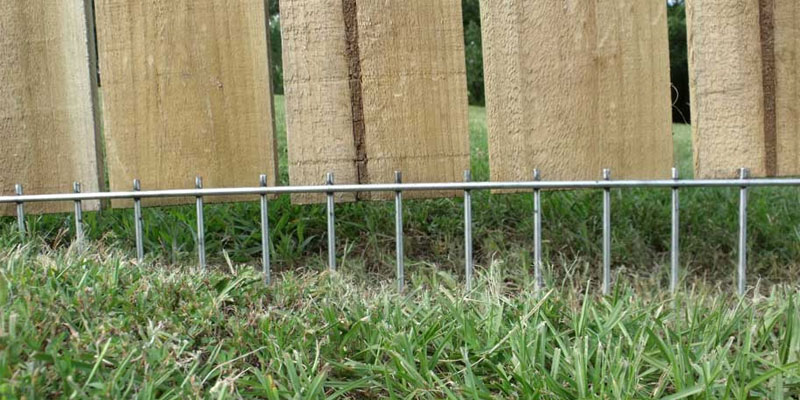
Finally, let’s take a look at some preventative steps to keep chipmunks from returning, such as exclusionary devices.
Small, inexpensive fencing can be an effective preventative measure. Place this fencing where there are gaps in your privacy fence (as illustrated above). You can also use mesh fence such as chicken wire to cover vegetable gardens, housing foundation cavities, exposed pipes, etc.
Another relatively inexpensive way to prevent chipmunks from burrowing is hardware cloth.
This material can be buried between six and eight inches deep to prevent the chipmunks from burrowing into the garden or other significant areas.
Since chipmunks are attracted to bird feeders, bird baths, and other water and food sources, you may need to temporarily remove these until the chipmunks are gone.
Final Words
Having any kind of pest infestation can be a nightmare, and in some cases, extreme measures must be taken to remove the menace.
If humane methods have failed in removing the chipmunks, the products listed above are some of the better poison solutions on the market.
As with any poison, read all warning labels and instructions before using. Also, make sure your pets and family members won’t accidentally come in contact with the poison or chipmunk corpses.
Remember, killing critters is almost always a last resort, and chipmunks actually play a vital role in the ecosystem. Kill them only when absolutely necessary (and only if it’s legal where you live).
- How to Identify Skunk Poop (With Pictures) - April 1, 2024
- You Really Don’t Need That Opossum Trap - January 4, 2024
- How to Set a Mouse Trap Without Getting Hurt - December 28, 2023

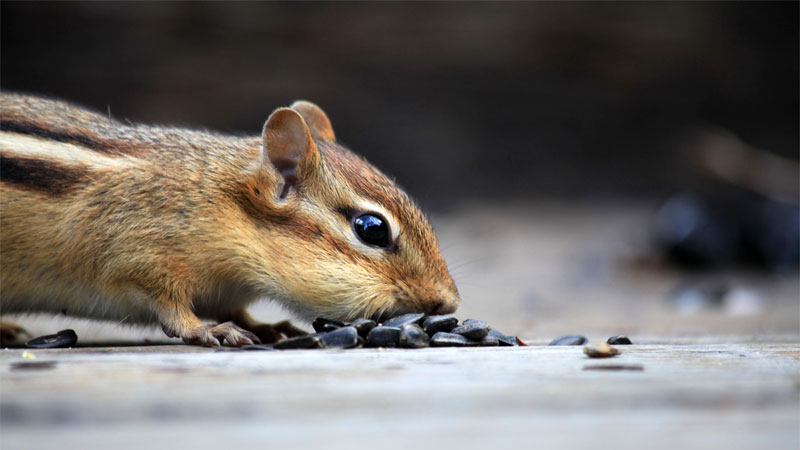
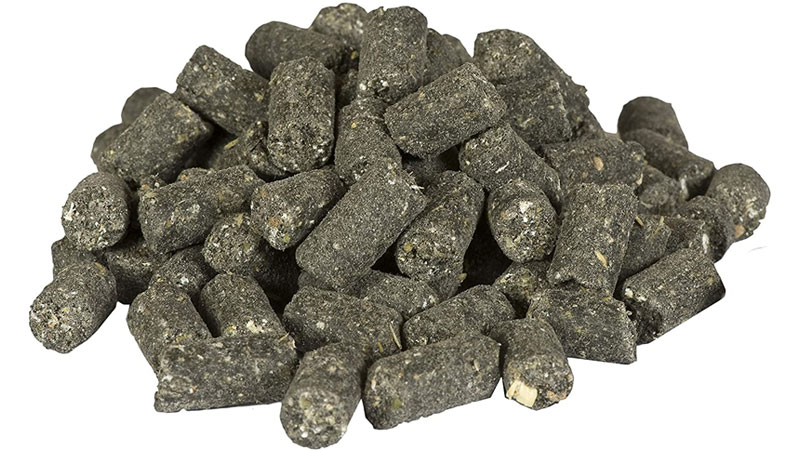




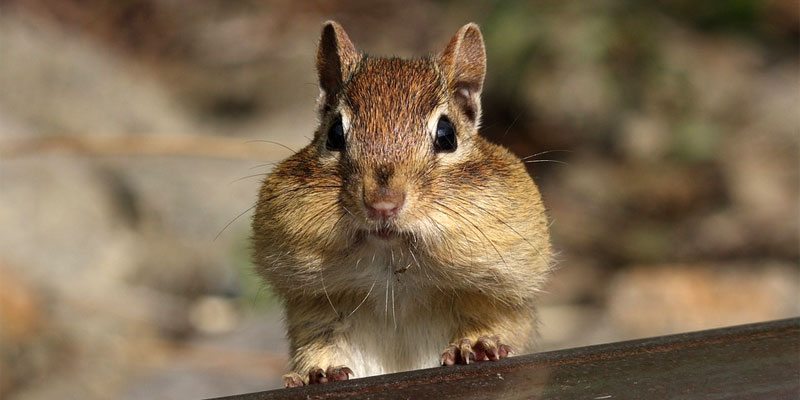
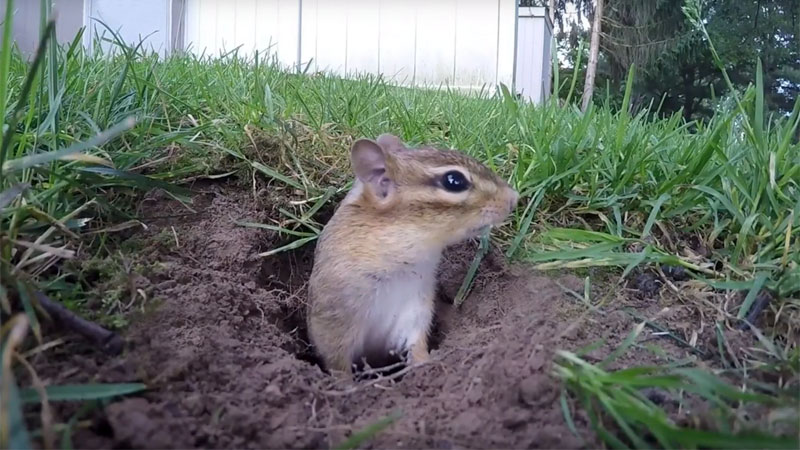
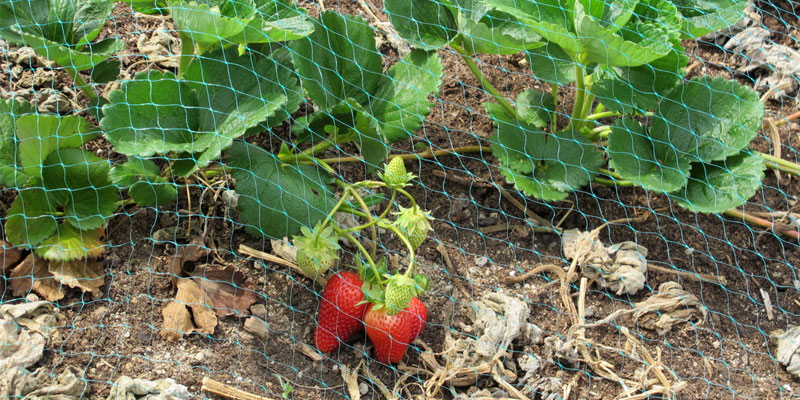
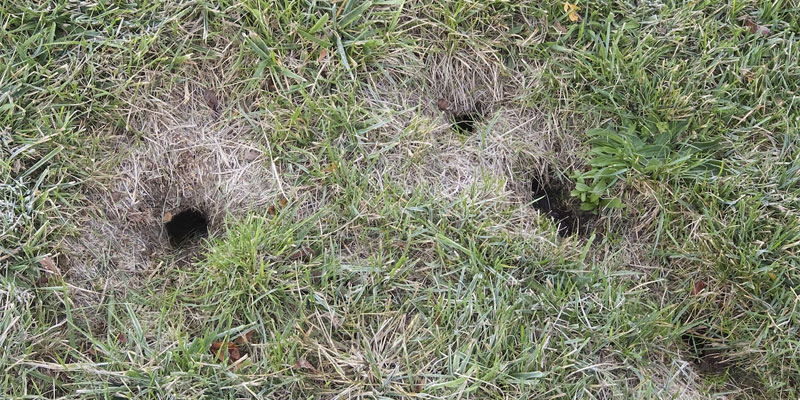
I read somewhere that Rugby Ferrous Sulfate Tablets will kill chipmunks when pored into their holes. Is this true?
I have not heard that before so can’t confirm either way. Ferrous sulfate is used to treat an iron deficiency in humans (and also used to get rid of moss on yards).
A con with all poisons is the stink if the critter dies behind a wall or under the floor or any other place that is inaccessible.